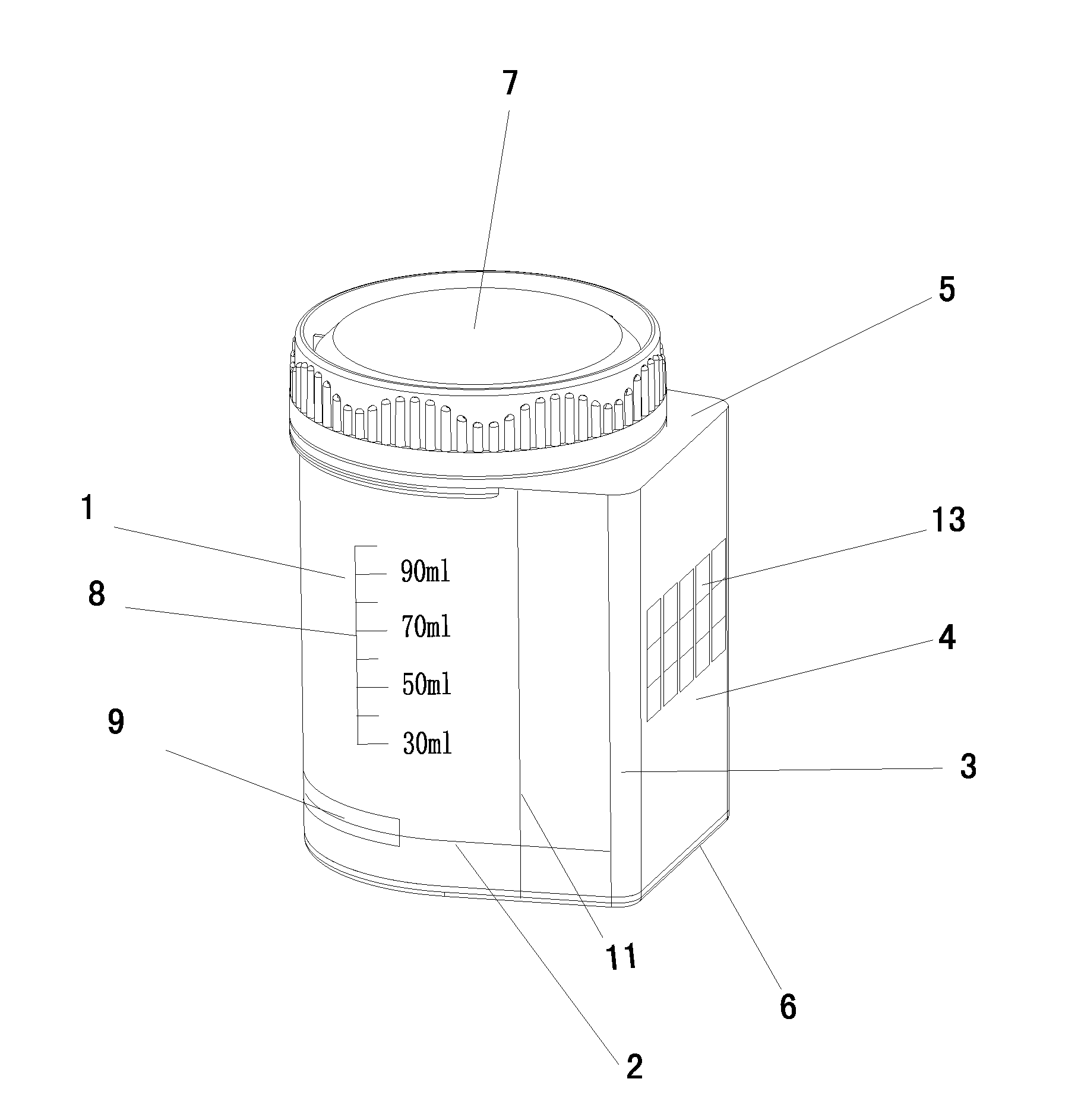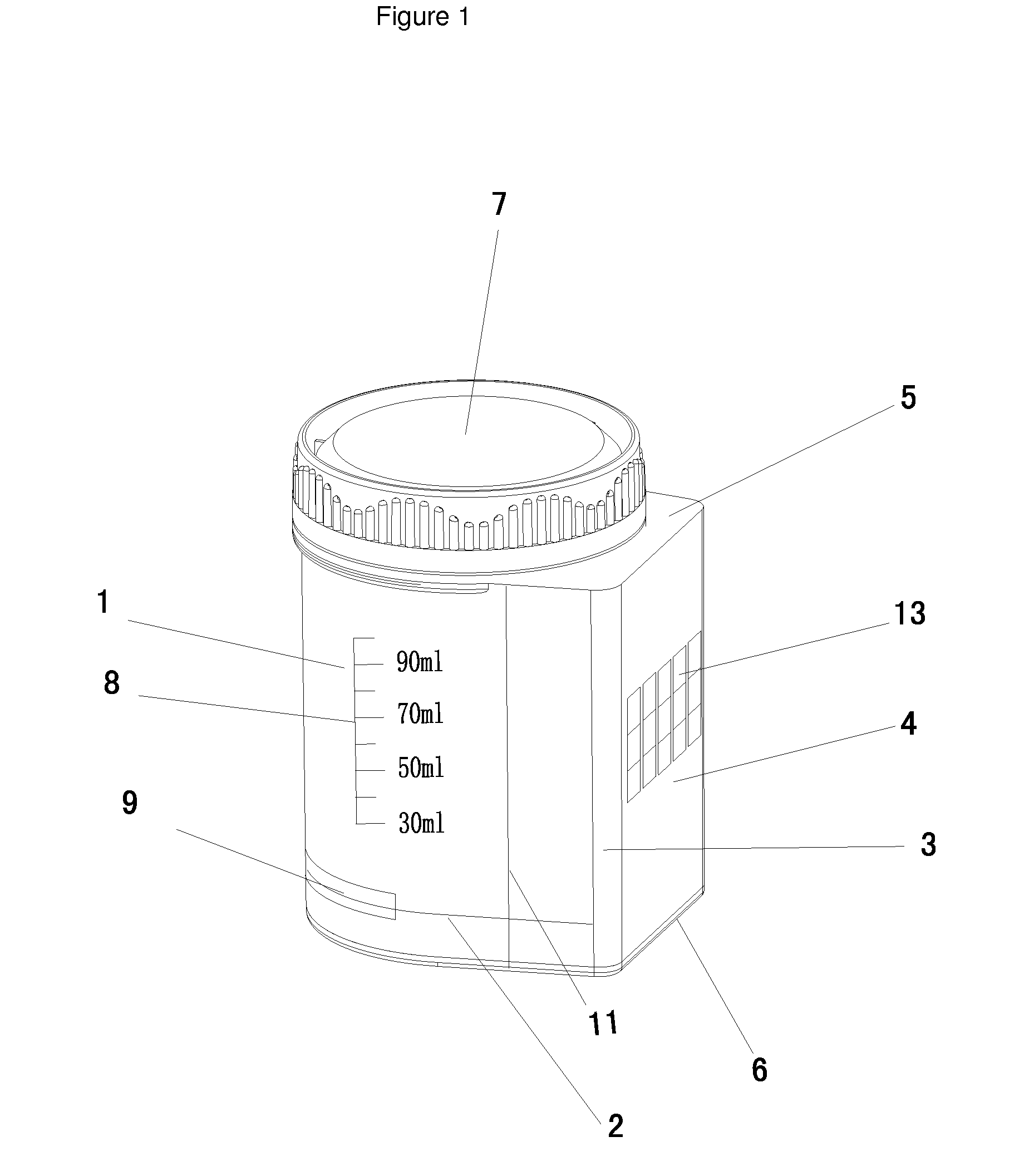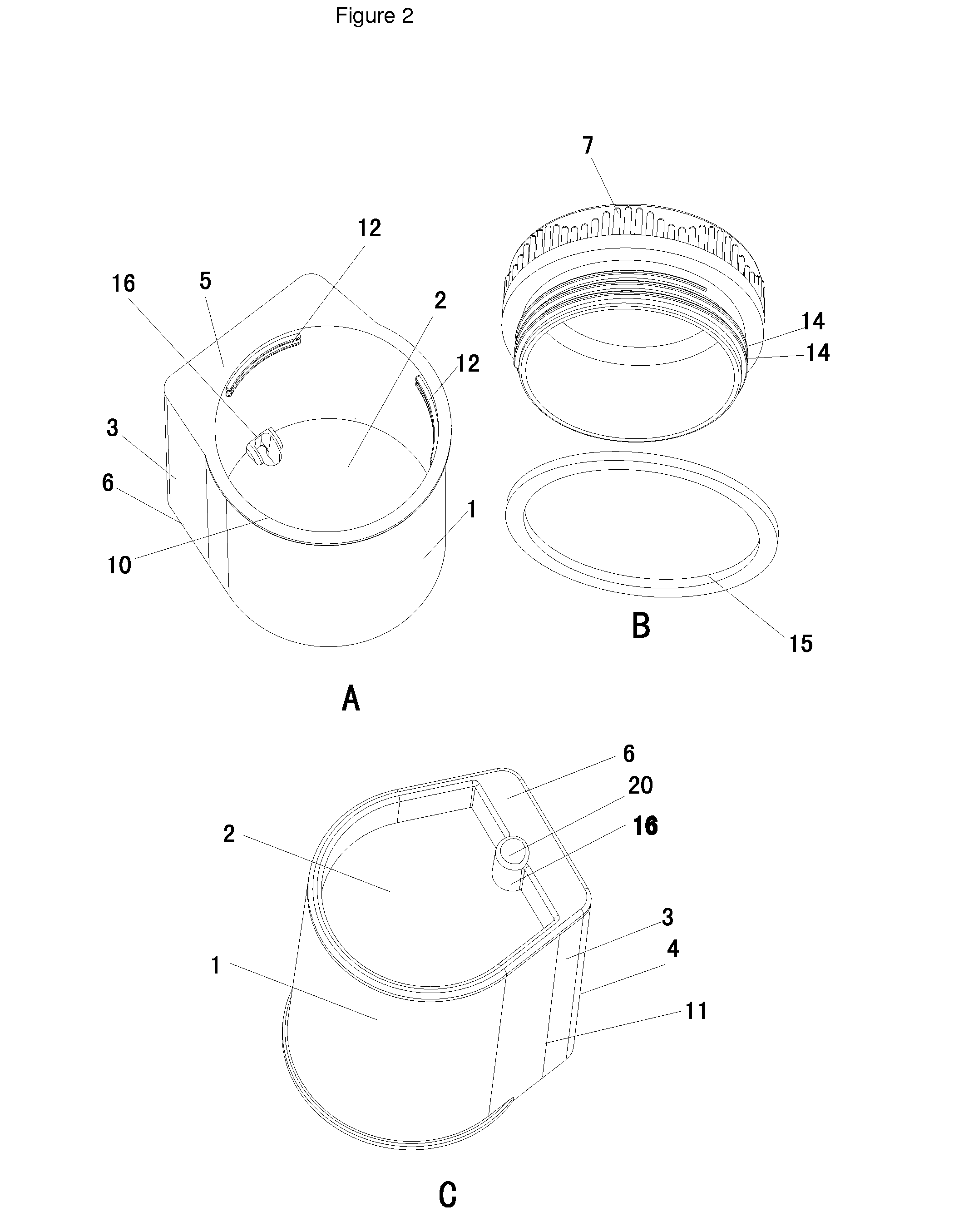Collecting and testing device and method of use
a technology of collecting and testing devices, applied in the direction of instruments, chemical methods, analysis using chemical indicators, etc., can solve the problems of increasing the chance of additional errors, complex design and manufacture of these devices, and potential contamination of the original specimen in the container, so as to achieve the effect of potential contamination of the original specimen
- Summary
- Abstract
- Description
- Claims
- Application Information
AI Technical Summary
Benefits of technology
Problems solved by technology
Method used
Image
Examples
example 1
[0129]A collecting and testing device depicted as FIGS. 1, 2, 3 and 4 containing one or more test strips can be used for the detection of drug(s) or drug metabolites in human urine. A subject in need for a drug test is given the collecting and testing device or referred as “the cup”. In the restroom, the subject opens the lid of the cup and urinates into the container of the cup, then closes the cup and gives the cup to a technician. When the person urinates into the container of the cup, a portion of the urine automatically flows into the test chamber through the conduit. The urine in the test chamber contacts the sample application zone of one or more test strips, and the testing is initiated. The test result can be viewed through the window of the test chamber.
[0130]The technician reports the results in Example 1. If the result is a preliminary positive, the cup with urine specimen will be sent to a Lab for confirmatory test. The urine specimen stored in the container can be sepa...
example 2
[0131]The collecting and testing device depicted in FIGS. 7 and 8 containing at least a test strip can be used for the detection of Strep-A. A throat specimen is obtained from a patient exhibiting signs and symptoms of pharyngitis using a standard size rayon or dacron swab. Four to five drops or approximately 200 microliters of reagent A (2 molar sodium nitrate) and four to five drops, approximately 200 microliters of reagent B (0.2 molar acetic acid) are added to a collection device such as a test tube. The swab containing the throat specimen is inserted into the tube and then allowed to incubate for 60 seconds. Then, the liquid contents in the tube are transferred to the specimen container of the present invention, wherein a portion of the liquid contents (approximately 150 microliter) will flows into the test chamber through the conduit. A liquid sample flow is initiated on the test strip by capillary action and the result of the test can be viewed through the test result window ...
example 3
[0132]The collecting and testing device depicted in FIGS. 7 and 8 containing at least a test strip can be used for the detection of Chlamydia. Endocervical specimen is collected using either rayon or dacron swabs with plastic shafts or a cytobrush. One hundred and sixty (160) microliters of 1 normal potassium hydroxide is placed into a collection device such as a test tube. The swab or brush is placed into the tube, mixed for 10-20 seconds, and allowed to incubate for 5 minutes. After this time, 160 microliters of 1 molar acetic acid containing 0.1% of Tween-20 are added to the tube. The swab or brush is rotated for an additional 10-20 seconds. The liquid contents in the tube, approximately 300 microliters, are then added to the specimen container of the present invention. A portion of the liquid contents (approximately 150 microliters) will automatically enter into the test chamber through a conduit. Sample flow is initiated on the test strip by capillary action and the result of t...
PUM
| Property | Measurement | Unit |
|---|---|---|
| pore size | aaaaa | aaaaa |
| pore size | aaaaa | aaaaa |
| pore size | aaaaa | aaaaa |
Abstract
Description
Claims
Application Information
 Login to View More
Login to View More - R&D
- Intellectual Property
- Life Sciences
- Materials
- Tech Scout
- Unparalleled Data Quality
- Higher Quality Content
- 60% Fewer Hallucinations
Browse by: Latest US Patents, China's latest patents, Technical Efficacy Thesaurus, Application Domain, Technology Topic, Popular Technical Reports.
© 2025 PatSnap. All rights reserved.Legal|Privacy policy|Modern Slavery Act Transparency Statement|Sitemap|About US| Contact US: help@patsnap.com



